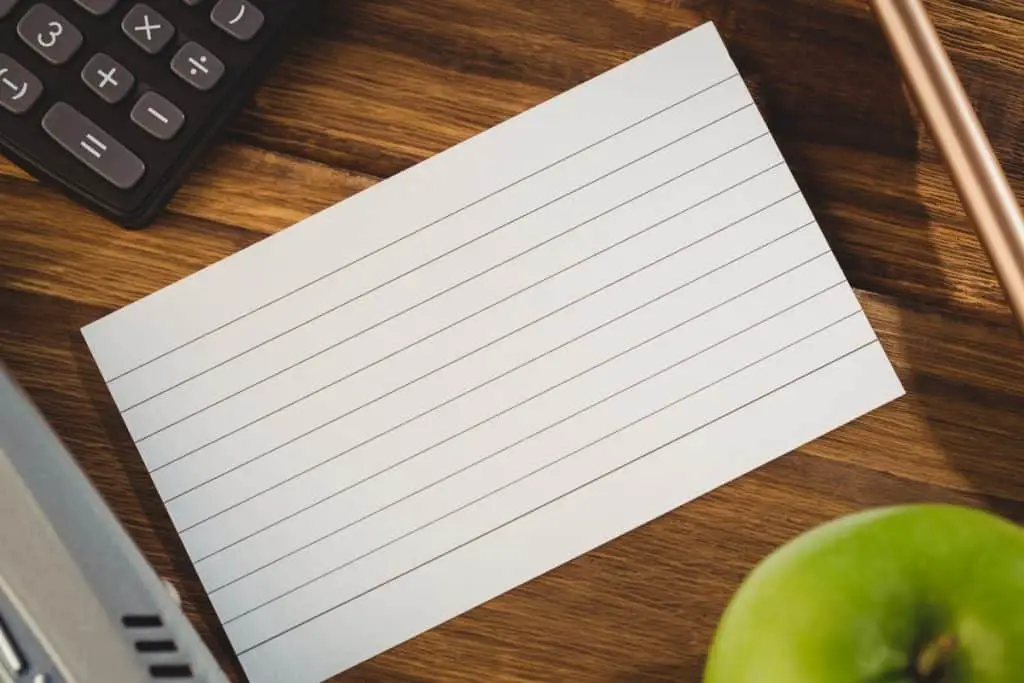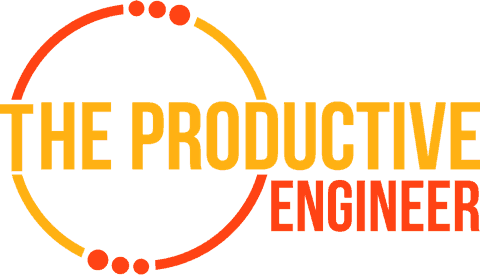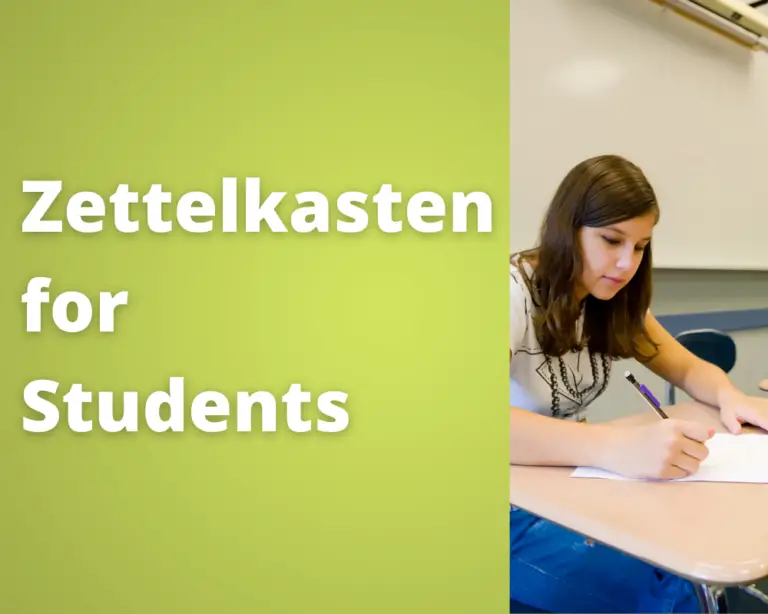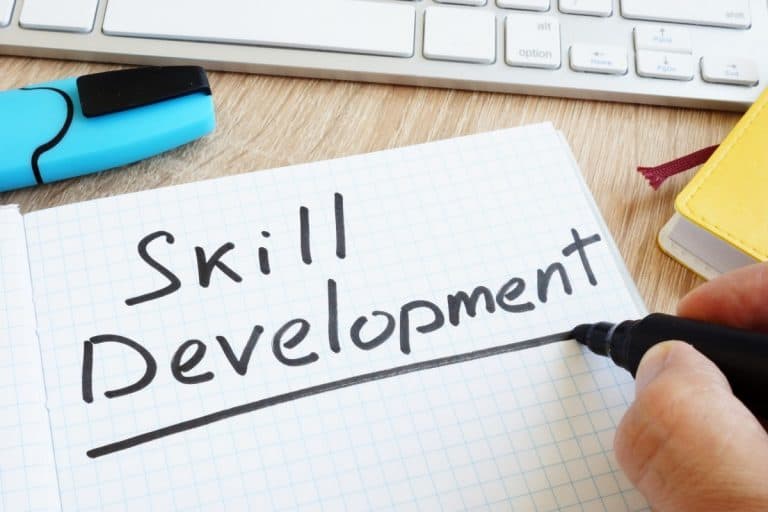The Best Study Methods To Retain Information

Studying is a pretty big task all on its own; you want to be sure you are doing it as efficiently as possible. Let me share some sure-fire methods of study that will ensure you retain as much information as possible.
So what are the best study methods you can use to retain information effectively? Enclosed below is a list of techniques you can use to maximize your ability to retain information:
- Use a structured note-taking system
- Use Association to relate to what you are learning
- Leverage Visual Memory
- Use Mnemonics
- Chunk Down What You are Learning
- Teach/Debate What You are Learning
- Use Flashcards to reinforce content
- Use Spaced Repetition and Read Aloud
If you are looking for additional study tips, check out our blog post with twenty-five essential study tips are the link below:
25 Essential Study Tips to Maximize Academic Performance
Before we get started, if you are looking to improve your writing, you should really check out Grammarly. Grammarly is a godsend for those who have to write term papers, dissertations, or anything else you write that needs to be grammatically correct. Grammarly doesn’t just check grammar either. It helps you to write clearly and effectively by checking for overused words and unclear phrases. Best of all, Grammarly has a great free tier to get started with. For more information on Grammarly, click the link below:
Grammarly – Great Writing, Simplified
If you are looking for the best study tools out there, you should read our article on the best study tools to enhance your studying at the link below:
The Ultimate Study Tools You Must Use to Succeed!
The act of studying can mean many different things, but the endgame is to retrieve the information we want when we want it successfully. To make this happen, we should first understand a little bit about how memory works. There are three stages of memory: Encoding, consolidation/storage, and retrieval. Encoding is what is happening as we are introduced to new information, i.e., as the lecture is being presented. Consolidation/Storage is the conversion from external experience to internal storage (a memory). And retrieval, of course, is the ability to recall the memory or fact.

For our purposes, we will focus on the consolidation/storage and retrieval of information since those are the areas we have the most significant control over and how we will commit our classwork to long-term memory. When deciding where to store the information we are currently taking in, the brain “asks” what is most important right now. When you actively focus on the lecture or the text, you are reading that tells the brain you want to commit that particular information to memory. From there, the data is stored in short term memory/working memory where we are actively processing the information.
At this point, the brain has been alerted to important information you intend to remember, and a sort-of memory cycle starts. This cycle will consist of consolidation/storage and retrieval. Where we will continually retrieve, reconsolidate, and restore the same information numerous times to strengthen the memories’ roots and accelerate the time it takes to retrieve the data.
To help you in the final step to turning your new information into long-term knowledge, I have gathered some of my go-to study methods below.
Use a Structured Note-Taking System
This first method can and should start in-class. From the moment you sit down in class, you should have a notebook and pen on your desk to write down any important dates or information the professor spits out at the beginning of the hour. After that, you should be taking hand-written notes on the lecture. I specify hand-written because typing just does not form the same connection as hand-writing your notes. You also have to make sure you are taking constructive notes; if you are just doodling or writing every single word down, then you are not using this method to its full potential.

I have talked about the Cornell Note-taking Method here before and highly suggest you give it a try. Having a solid template and system to make notes consistent and easy to review is a critical factor in how much this study method will aid in retention. For more information about the Cornell method, check out my blog post on how to use the Cornell method at the link below:
How to Use the Cornell Note-Taking Method
Whether you use the Cornell Method or another, be sure to read over your notes right after class to verify you have a good record of the main topic and understand everything you wrote down. Also, take this time to write down any questions that you have on the subject and either ask your professor or google.
If you are looking for a good notebook, I recommend the Moleskine Classic XL Notebook, which you can find more information on here.
Association
Our brain best remembers things when we can associate our new information with stuff we have experienced in the past or build onto stuff we already know. One of the most prominent ties to memory is emotion. If we have experienced any extreme feeling, we have a more vivid memory of that activity or event. Likewise, if we have a base knowledge of a topic, we will have a more straightforward time understanding and storing new information related to that topic. Association not only helps us consolidate and store data, but it also helps us retrieve the information faster and more thoroughly.

For example, if you have arachnophobia and its time to study spiders in bio class, you will more easily remember every terrifying detail of those 8-legged freaks than if you were studying bunnies. The same goes for building upon prior knowledge; if you grew up on a farm, then you will have no problem storing and retrieving information on weather patterns. The trick is learning how to relate your personal experiences and knowledge to the new information — trying to ask yourself how this new information applies to you or will apply to your future career.
Leverage Visual Memory
When we see it, we believe it; we also have a higher chance of remembering what we saw rather than what we’ve heard. We can do this in several ways, some better than others for learning purposes. If you like to highlight key sentences in your textbook, then you may have experienced a time when you could visualize where on the page you read and highlighted the information. The problem with that is, you may not have been able to remember the information itself. To take full advantage of your visual memory, try to imagine and visualize or draw a picture that somehow relates to the topic.
Use Mnemonics
What are the colors of the visible light spectrum? Roy G Biv. You probably know what I am saying here, but for those who don’t, Roy G Biv stands for: red, orange, yellow, green, blue, indigo, and violet. Those are the colors of the visible light spectrum / the colors of the rainbow. Roy G Biv is a mnemonic. There are several types of mnemonics you can use: musical mnemonics, name mnemonics, and expression mnemonics, to name a few. Roy G Biv is a name mnemonic. A musical mnemonic would be the ABC’s and an expressional mnemonic is FANBOYS, which stands for: For, And, Nor, But, Or, Yet, and, So.

There are numerous examples of popular mnemonics you can use, or you can just as easily make up your own. The visualization technique we just talked about is also a type of mnemonic. As with the visualization, the wackier the mnemonic, the more likely you are to remember it. Again, it doesn’t matter if anyone else understands your thought process or how the mnemonic makes sense. This is your rendering of a concept that you need to remember, and you only have to share it with the class if you want to.
Chunk Down What You Learning
For this method, you take large pieces of information and break it down into smaller chunks to easier understand and retain the information as a whole. Or vice versa, you take small pieces of information and organize them into categories(chunks) that make it easier to remember all the little facts. One example of chunking is making a mental memory tree where the tree is the whole topic, the big concepts are the branches, and the little pertaining facts are the leaves. But grouping lots of things together or breaking up large concepts into smaller sections isn’t the only way to use this method.
Chunking works for time too. I have mentioned the Pomodoro Technique before where you spend 25 minutes focusing on one particular task and then take a 5-minute break. You do this is cycles of 4; once you have completed the 4th cycle, you take a longer break like 20 minutes to let your mind rest. No matter if you are reading, studying, or doing homework, this technique, along with the two aforementioned methods of chunking, helps keep your focus strong and your mind fresh.

For more information on the Pomodoro Technique, check out my blog post on how to use the Pomodoro Technique at the link below:
Why does the Pomodoro Technique work?
Teach or Debate
We have all heard that teaching your newly learned topic to a friend will help you solidify your knowledge of the subject as well, and it is very true. Teaching someone else requires you to think about things a little differently. You will need to be able to put the concept into your own words and be able to answer any questions about it. The first time you do this, you will probably be asked a question you haven’t thought of before or be asked to clarify something. Don’t feel bad if you don’t have the answer or if you get it wrong the first time. The point of this exercise is to find the gaps in your understanding.

In fact, if you get stumped by your pupil of choice, take the time to work through the hole in your knowledge with them. Walkthrough what you know and see if you can come up with a viable answer, then fact check yourself. After you take a deep dive into the subject and check your knowledge, you will definitely remember it for next time. Once you are able to teach the basics to someone, then you are pretty well versed in the matter and should take it one step further.
Have a Debate
If you are going over a topic that can be argued over, commence the argument! Fighting for and defending your side of the subject will force you to think of new concepts that relate to your own experiences. Don’t forget that your opponent will be doing the same to defend their side of the argument. Since none of us experience the same thing in the same way, you will have to come up with new reasons why your side is the best, and the other side sucks. Whether you win or lose, you have gained significant knowledge on both sides of the coin.

Now, switch sides. You have already heard how the other person defends this side of the debate, make a point to find new ways to defend this side and more holes to poke in the opposite argument. Learning how to change perspectives on a topic and see it fully from each side is a sure-fire way to get a complete understanding of the subject. By the end of all this, you will have a considerable working knowledge of the topic and confidence at test time.
Flashcards
Oh, great flashcards, you have been there for us since we first started learning vocab words in early elementary school, and you have never let us down. Flashcards are incredibly easy to make; they are easily portable and can be whipped out for a quick 10 min review anytime, but most importantly, they are super versatile. From simple vocab words to complex theory to math formulas, you have endless ways to associate meanings to terms.

We all remember, at some point or another, sitting in class before the bell rang, flipping through our flashcards. Some of us more feverishly than others who had been studying all week to prepare for the quiz properly. My point is, they just work! If you are looking to retain information, make hand-written flashcards, and review them often.
Put it into Practice
If you are learning anything that can be put into practice, you should absolutely give it a try. Real learning doesn’t happen unless you apply the concept to real-world action. In chemistry class, you spend a large amount of time learning the basics, what the elements are, why we group them the way that we do, and how they will react with other chemicals. But just because you know baking soda and vinegar have a chemical reaction doesn’t mean you fully understand what will happen if you mix the two. In order to learn about the reaction of the chemicals, you have to set up and experiment.
Furthermore, you learn best by making firsthand mistakes. Imagine you are learning how to ride a bike; your parent has briefed you on all the basics like pedaling and breaking. When you take off on that first ride down the driveway, you are filled with excitement and adrenaline from a successful launch. As you approach the end of the driveway, coming up fast on the road in front of you, you forget what to do! In an attempt to prevent yourself from going headfirst into traffic, you make a hard right to get onto the sidewalk and end up wiping out and skinning up the whole right side of your body.

Why? Because nothing could prepare you for the way you have to turn the handlebars and lean just a little to keep your balance through the turn except the experience. After that first ride, you are exponentially more knowledgeable on bike riding physics.
Spaced Repetition
Spaced repetition is the complete opposite of pulling an all-nighter to study for the exam tomorrow morning. This concept teaches us that in order for the subject we are learning to take root in our brain, we need to review periodically throughout the week for short periods. In other words, consistency is vital, and cramming is a set up for failure. Although not glamorous, this is one of the most critical methods for maximum retention.
In short, focus on the lecture and take notes in class, review your notes right after class and ask any needed questions, make flashcards, review notes and flashcards on a regular basis in small to medium time chunks. The longer you sit and try to stay focused and study one thing, the less success you will have. Our brains get tired, and our focus runs out; next thing you know, you are reading the same sentence five times and still not comprehending. The best way to prevent focus fatigue is to remember that college is a marathon, not a sprint.
Read Out Loud

Whether you are reading the textbook, your notes, or reviewing flashcards, make sure you use your voice. We retain information a little bit better when we hear as well as read. We know that we can keep information from any of our senses, but some lend themselves better to retention than others. Reading is great, and paired with taking notes is even better, but better than those two alone, involve one more sense into the mix by reading out loud. The more of our senses we use to absorb information, the better chance we have at remembering it later.
As with all of the methods mentioned in this post, they work best when paired with other methods. If you came here with no idea how to study correctly, pick a few of these techniques, and use them consistently until you have mastered the methods you chose. After a few weeks, you will be able to tell the difference in your memory retention and even tweak the ways to make them fit seamlessly into your study regimen. Depending on what you are learning, whether it be simple facts, complicated concepts, or a specific skill, you will need to apply the appropriate learning technique to the situation.
Don’t worry! The more you engage with the material you are trying to master, the more you will grasp the specifics. Learning takes time, effort, and failure to solidify. One more time, for those in the back; College is a marathon, not a sprint.
Want More Tips and Tricks? Subscribe to our Newsletter!
If you haven’t already subscribed, please subscribe to The Productive Engineer newsletter. It is filled with tips and tricks on how to get the most out of the productivity apps you use every day. We hate spam as much as you do and promise only to send you stuff we think will help you get things done.
Check Out Our YouTube Channel!
We have a YouTube channel now and we are working hard to fill it with tips, tricks, how-tos, and tutorials. Click the link below to check it out!
Check out our Resources Page
Check out our resources page for the products and services we use every day to get things done or make our lives a little easier at the link below:








